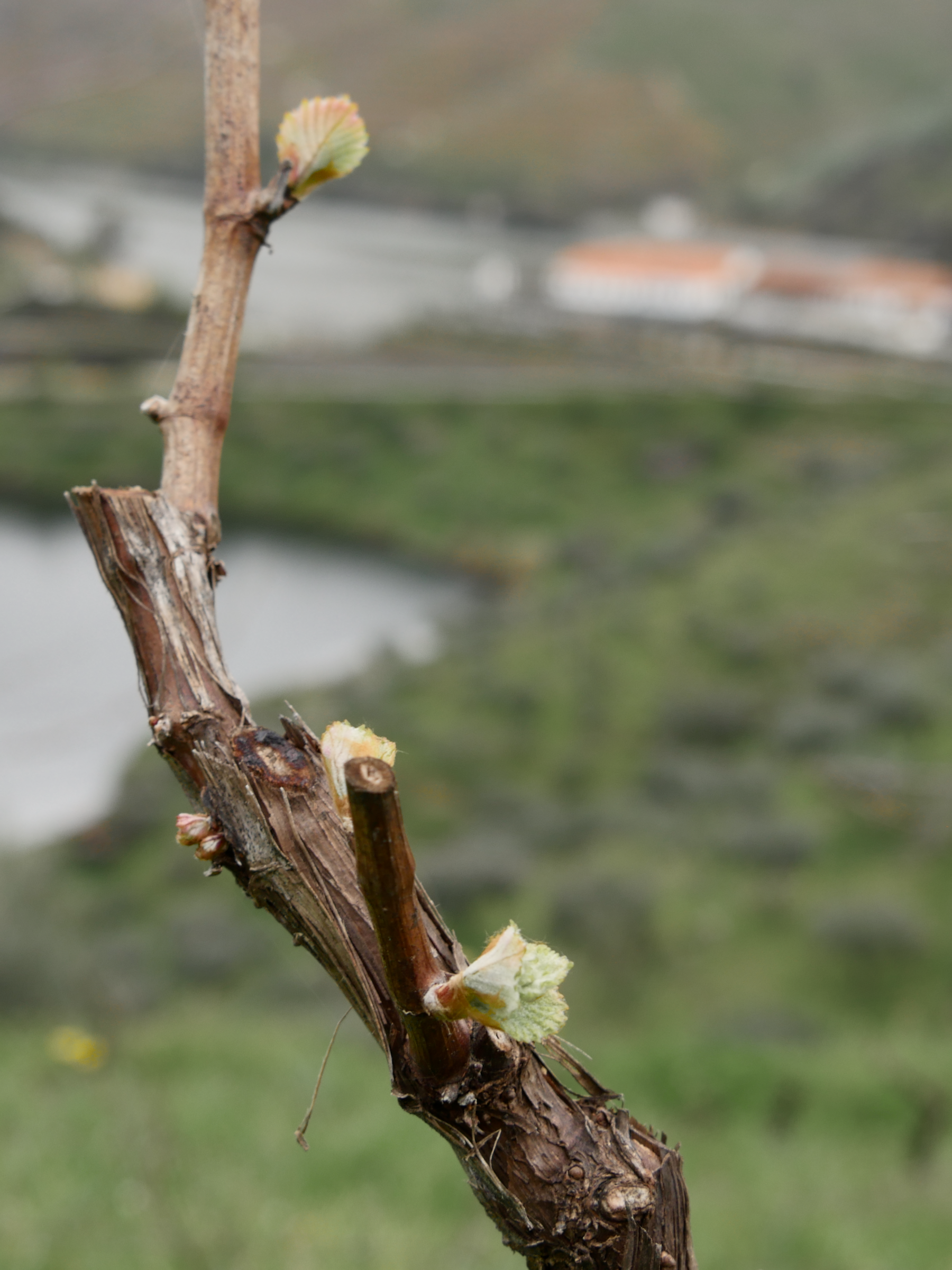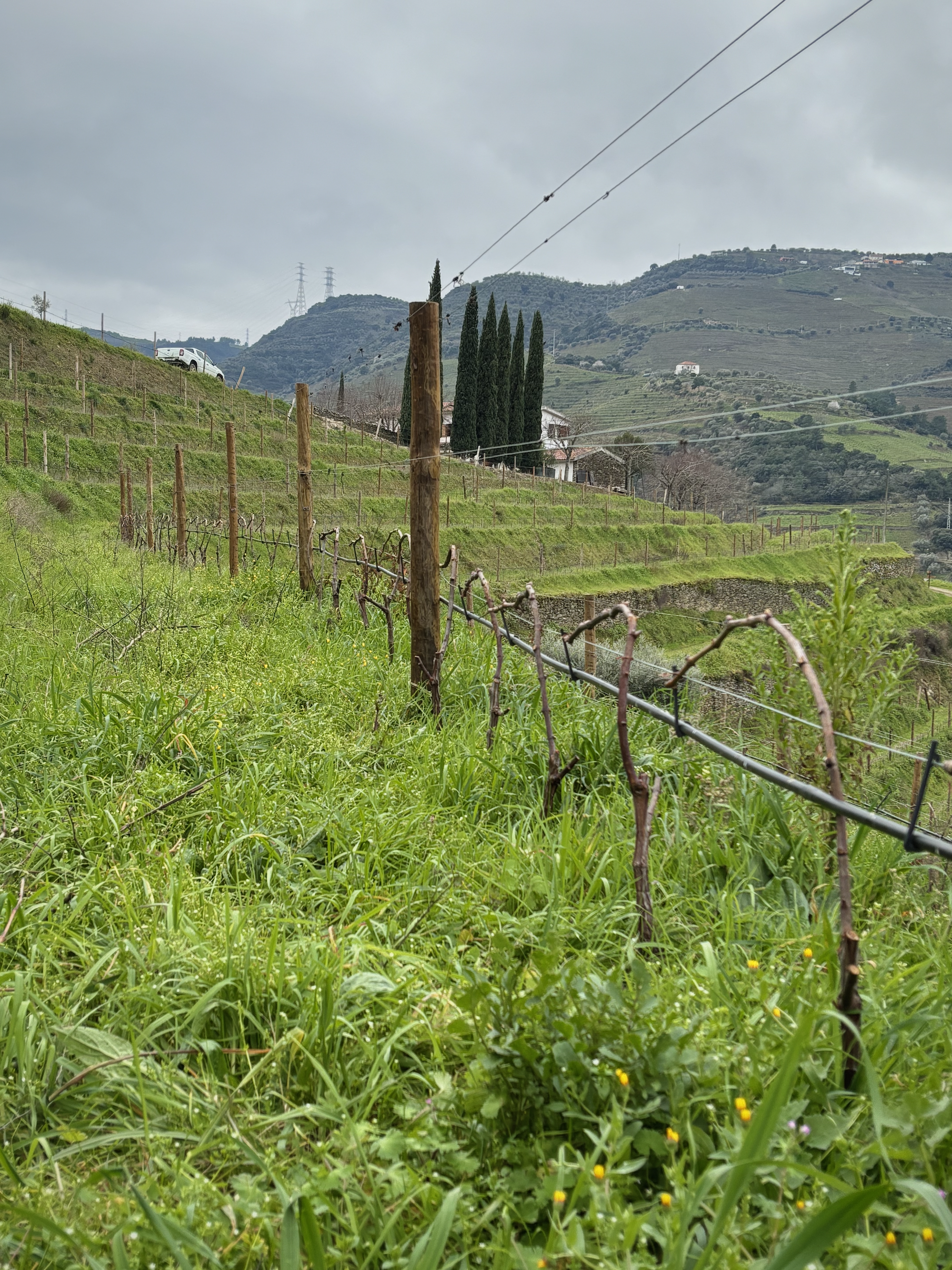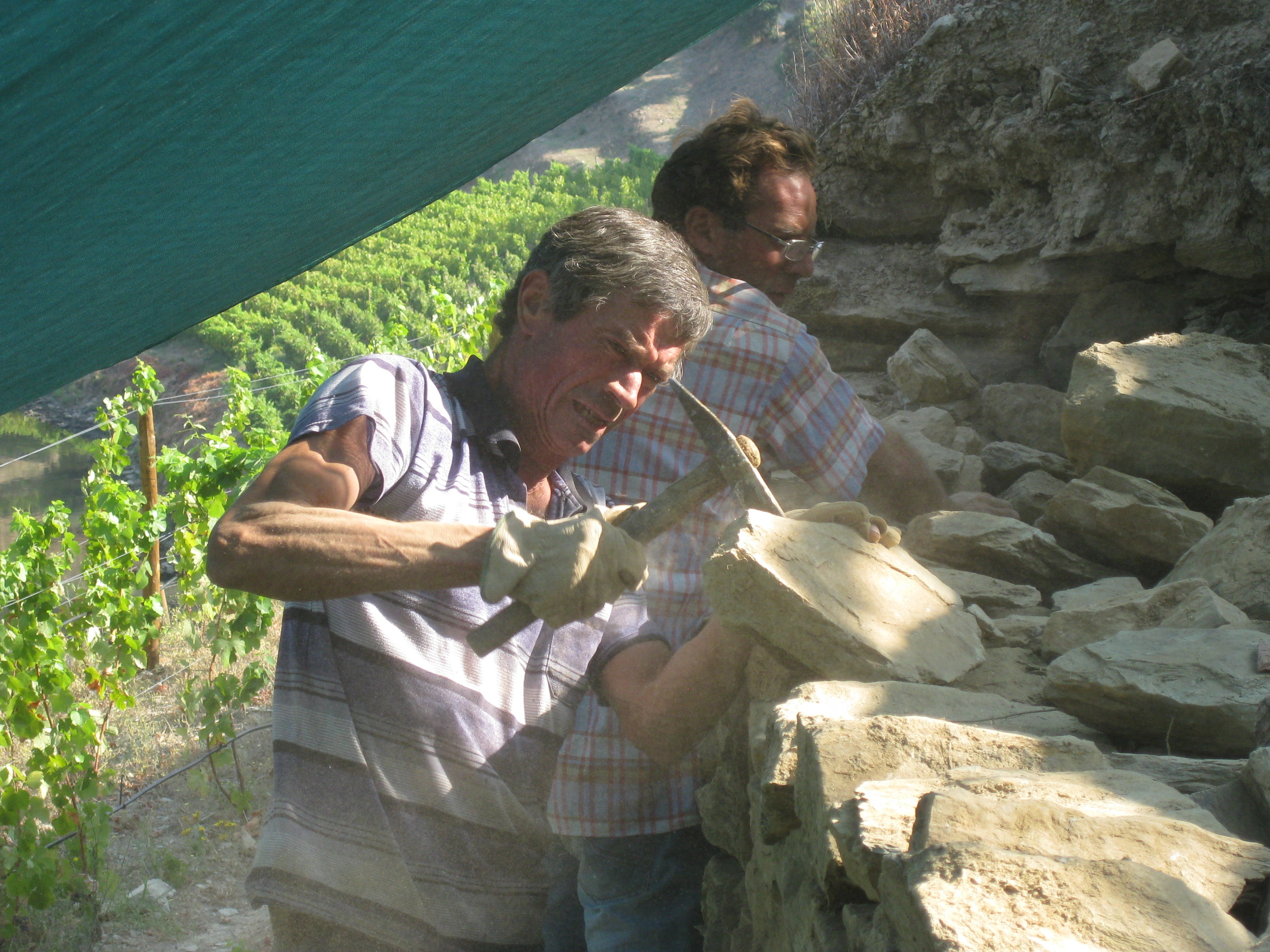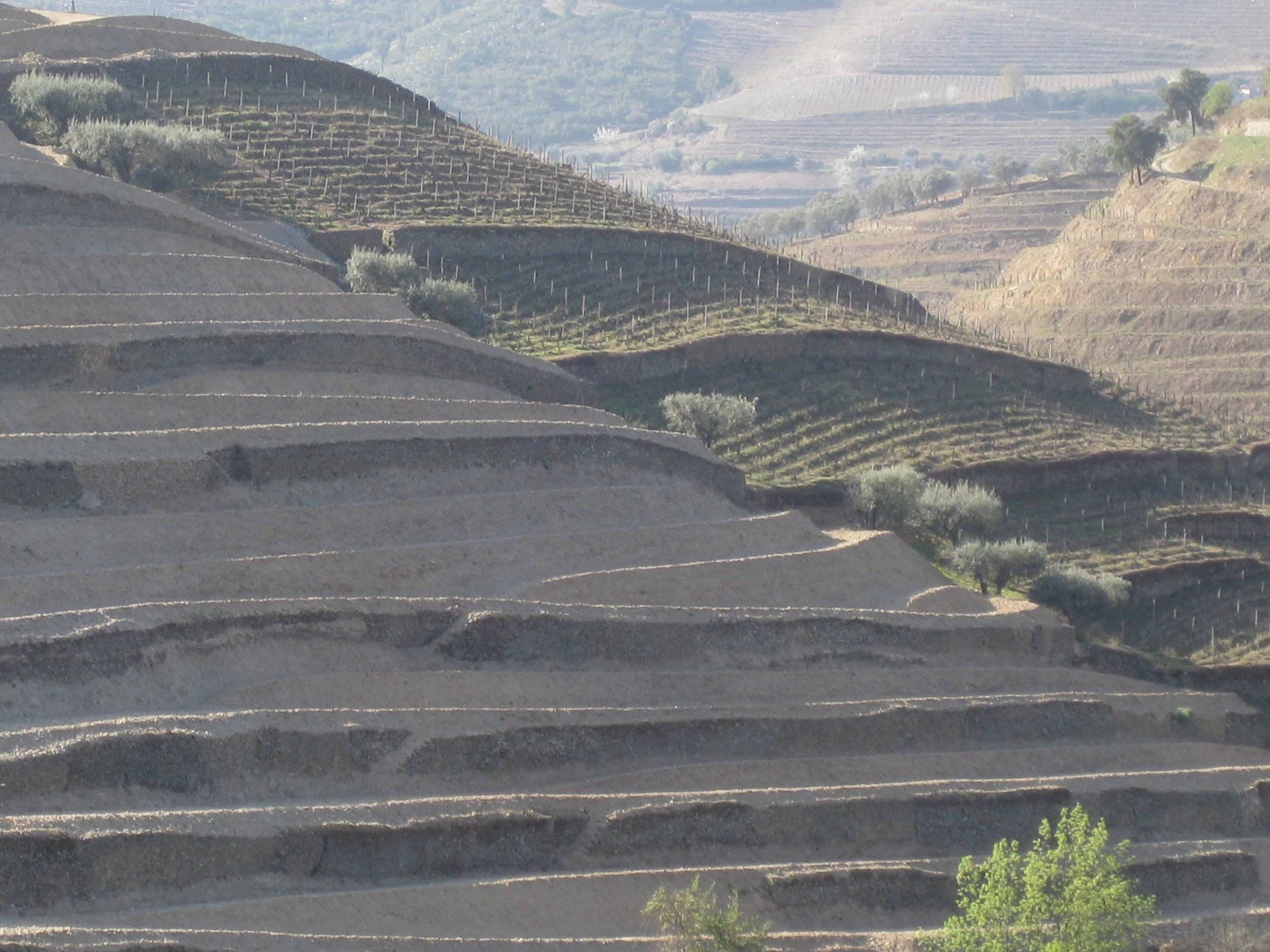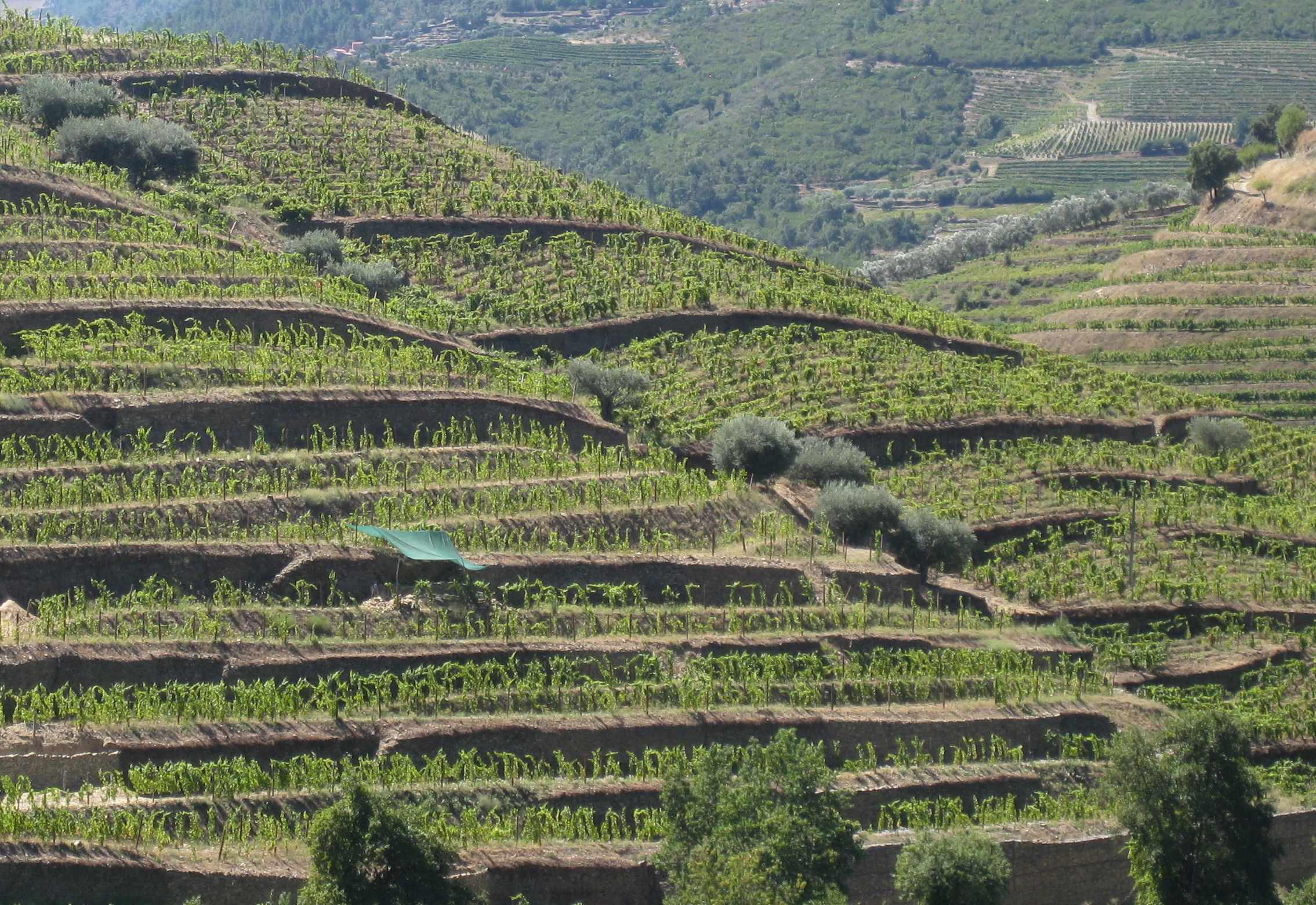The definition of weather in the Douro valley is “3 months of winter and 9 months of hell” (!), to describe the short winters and the intense heat and drought the rest of the year. At Quinta do Tedo we dry farm* and, with annual rainfall being 50cm or 19.5in, the maximum amount of rain needs to be saved for the vine’s survival. At Quinta do Tedo we achieve this, thanks largely to our schist soil and terraced vineyards supported by our beautiful stone walls.
Our vineyards are classified “A”, Douro D.O.C. appellation’s most prestigious rating on a scale of A to F, equivalent to Grand Cru in Burgundy (my husband keeps me abreast of the similarities between Burgundy and the Douro!). Schist soil is de rigueur for the best Port, and simply put is flaky decomposed slate. Our vineyard’s 20-30cm/8-12” schist topsoil, with a smattering of rocks, blankets the deeper slate layers growing obliquely down to the earth’s center. This powdery topsoil acts like a sponge during the short and intense winter rains, allowing the rain to slowly descend between the schist and slate layers to the water table. The ancestors of Quinta do Tedo, to prevent erosion during the rainy season, used extracted schist rocks to build strong wide and high “dry” walls (no cement to reinforce). These walls allow for the rainwater to gently seep down from one terrace to the next, replenishing a water table that plays such a vital role in the vine’s survival.

The vine’s roots grow deep down between the cracked slate to access the water table’s humidity. Some of our older vines go down as far as 25m/80ft! It is during the intense and long hot summer months that the water table comes to the vine’s rescue, and the humidity pushes upwards through the slate’s crevices, a respite to the vine’s thirst, explaining how our vineyards can possibly survive and even remain green in the Douro, without rain for months at a time and when sweltering temperatures over 40C/105F can be routine in the summer.
In the past 15 years many traditional stone walls have been torn down and replaced by “patamares”, the wall-less wide terraces put in by enormous earth- moving caterpillars, that were largely funded by the World Bank after Portugal’s entrance in 1986 to the EEC, in hopes to find a mechanized and cost-effective way to “tame” the challenging steepness of the Douro. No thought was given to the resulting erosion that is found today in many of these patamares vineyards. At Quinta do Tedo we continue to rely on our 4 km/2.4 miles in total length of traditional stone walls, that need an upkeep of 300m/930ft in manual labor every year. Oftentimes traditional ways survive for a reason and cannot be replaced by modern practices introduced by man’s hunger for fast return on investment. Our vines know how to survive in the infernal conditions that Mother Nature can stow upon us, and thanks to her we have the ingredients to make world-class port and wine.
*Dry farm means no irrigation. Vineyard irrigation is illegal in the Douro, as in other prestigious European appellations, except to establish new vines for the first 3 years. At Quinta do Tedo we practice “emergency on-demand” manual watering, only during the hottest summer days for our young vines until they are established.
PS Thanks Gretchen for the photo!
Look at previous comments




